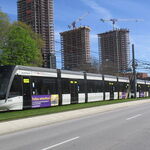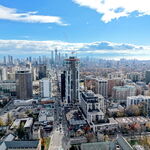crs1026
Superstar
The pining for the status quo is what I don't get. What exactly is good about the current service which only works for those who aren't time sensitive and those in big cities, and reduces demand in the large metros by extending travel time (because of all the intermediate stops)? Not to mention the cascading delays. I don't see anything redeeming in this model.
It’s not opposition to change per se - it’s the observation that Kingston most typifies what HFR will look like, and I find it counterintuitive that VIA would sacrifice what they are working towards, where they have already built it and proven its value.
As you note, Kingston is smaller than other key cities, yet its ridership is disproportionate. I would attribute that to having the highest frequency of departures firstmost, and good timings also. If this is true, then adding frequency to Windsor, London, Kitchener would be compelling.
Kingston also has a choice of express and local trains. I have no data as to whether riders show preference for the expresses. VIA would know that. As a midpoint station that isn’t that many hours to each end, I would guess that the difference in trip times matters less than the wide choice of times. However, even for shorter runs I would predict that the general rider experience is subjectively different when a train makes many stops. So I am loathe to lose those, although that may just have to happen.
You say this as though the schedule change doesn't add significant value. It does.
Since COVID reduced VIA’s operations (and put me in front of my monitor so much more!) I have been watching VIA’s moving maps, and have had the benefit of chats with a few operating folks. My impression, supported by others’ comments, has been that VIA’s timekeeping has improved lately because there are fewer passenger trains out there (yet just as many freights).
What I have observed is that late trains seem to be able to recover from delays quite well with the current operating plan. If current conditions are a snapshot of how the line will look post-HFR, I would say the concern about cascading delays is less serious, and the operational value of splitting schedules at Kingston is lower. I would not be upset if VIa chose to do that, but in many cases their logistics might prefer that a trainset continue on in the same direction. In that case, I would say join the two schedules and not break it for the sake of configuring as a hub.
What’s disappointing is how often trains reach the limits of Metrolinx territory on time (sometimes even having recovered from delays) only to arrive at Toronto late, because (even with GO service cut back) VIA is run behind a slower GO train. The problem of VIA not having priority transcends freight vs passenger.
HFR was originally pitched as making Corridor East net profitable. And I believe it. I think the Kingston hub will be quite successful at growing Lakeshore traffic. Heck, I think it's the only way to actually make the service grow: by optimizing around Kingston departures.
But even if cross-subsidy is required, I fail to see the huge challenge. Either the CIB accepts it, or some deal is worked out with the government to continue subsidizing Lakeshore service. And hopefully that level of subsidy will be less than commanded today, with fewer and smaller trains to subsidize. And hopefully higher load factors.
I would keep it simple - leave HFR as a standalone profit/loss center, and leave Lakeshore service as a line item in the customary list of corridor services, with whatever cost recovery it earns, and let the overall subsidy to the Corridor include it. My rationale is that post HFR there will be a reckoning in Ottawa over the remaining Corridor shortfall. Ottawa will still be left in a quandry about whether to support services that don’t show full cost recovery.... and will have fewer options to invest in a separate right of way for these. I’m kind of guilty of trolling to draw that out. There will be people insisting on cutting the subsidy altogether, and VIA may not be able to justify expansion fast enough to prevent cutbacks.
I can envision HFR reaching London eventually, but unlike the East Corridor, there are no abandoned parallel corridors that can be reactivated. CN may assist, provided VIA sticks to the Stratford line, but we still have no public resolution of the Halwest to Georgetown corridor which they will be protective over. Entry to London, and increased frequency over the short stretch of CN west of town, will also be sensitive. New constuction may be cheaper, but land is scarcer and costs more, with strong local opposition as we saw in Oxford County.
That brings me back to the “topic that we must discuss elsewhere”.... the reality that even with the improvements in HFR, VIA will remain a tenant on others’ lines, and has inadequate stature to defend its interests. This applies to Kingston also - as CN volume grows, can VIA maintain that improved operation, and can it add more trains when business warrants it, or where it will support HFR? What VIA promised that Mayor may not be sustainable without both funding commitment and some clout to ensure priority.
- Paul
Last edited:




